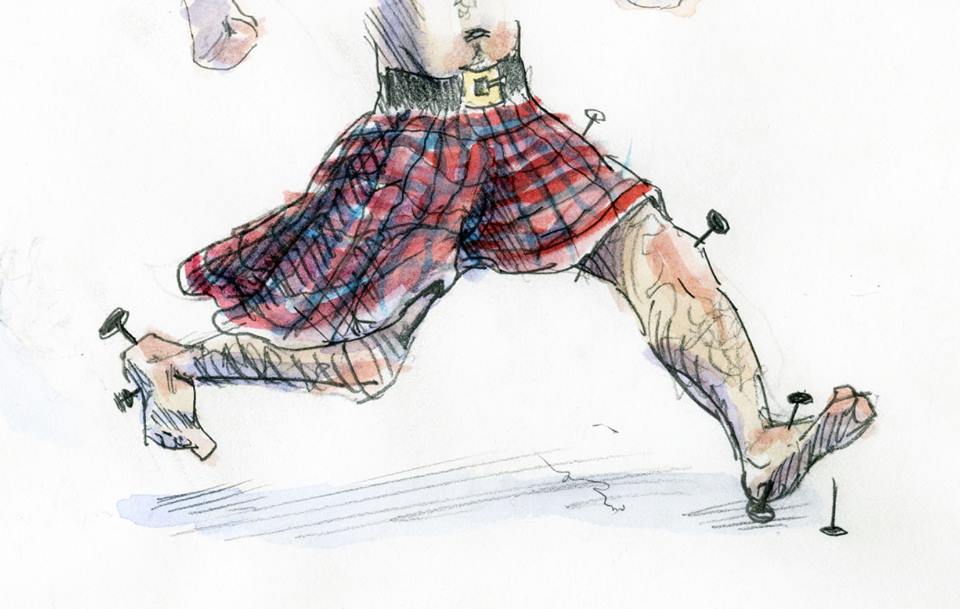I’ve started to post some interesting pictures on my Facebook account showing me in a squat position. This has had people start asking me questions like: “What are you doing?”, or “Why are you doing that?”, or my favorite from my daughter “Why do you always have to be so weird?”
Chair Sitting
Let me back up a little bit and talk about what the history of the chair in western society has done for our bodies. Sitting in a chair has allowed us to painlessly rest our bodies without having to use vital core muscles that keep our bodies strong and lithe. As the work culture (especially office culture) has developed, so has the amount of time we spend in chairs. If sitting in a chair makes up the majority of one’s day, then the body slowly starts to get weaker. Certain muscles start to atrophy from lack of use. We develop pains and lose mobility. There are even studies that show long periods of sitting put us at risk of increased blood clotting, or deep vein thrombosis (If you google it, you will find tons of articles). Sitting in chairs forces us to put our bodies into a more unnatural position while we weaken and lose flexibility.
The Squat
In other cultures, chair sitting has not always been the norm. The resting squat is a position that goes way back to our ancient ancestors. It is a totally natural position for the human form. If you watch toddlers closely, you can see them squat automatically. Nobody teaches them this. It is a natural position. We learn our way out of squatting as chairs are introduced to our daily lives as we grow up.
While squatting is a resting position, it is much harder to slouch. It keeps those core stabilizing muscles strong. It also keeps our joints more open and flexible. When practiced, squatting staves off knee and back pain and strengthens the muscles that support these areas. Another thing that a squatting practice can help facilitate are healthy digestive and bowel functions. They have even come up with some products for us westerners to aid in our eliminations. Toilets in certain asian countries are already built in for such endeavors.
The squat consists of bending at the knees, keeping your spine straight, pulling your butt toward your heels while having both feet firmly planted on the ground, heels down. Mark Sisson of Mark’s Daily Apple has made a good primer talking about easing your way into the squat (it’s worth it to check out the ‘asian squat’ video at the end of the article). For those of us in western cultures who aren’t used to this squat, it might take some doing to stretch those muscles and loosen up those joints so that we can even comfortably get down in that position. I’ve worked with my son around this. He used to play the catcher position in baseball and when he went into his squat his heels would come off the ground and he would go up on his toes. This is how catchers are coached to crouch so they can have quick pop ups and mobility. It took some relearning to sit back on his heels and slowly bring his body down into the relaxed squat position.
Of course if you already have knee or back damage, it would be good to check with your doctor before taking up such a practice. That being said, I have learned from personal experience that doing this practice will not create knee joint or back damage, but as I stated only serves to build up those muscles and joints in those areas.
Bodyweight exercise and flexibility expert, Ido Portal created a challenge encouraging people to create the habit of squatting on a daily basis. It’s called the Squat 30/30 Challenge . My friend Wendy Kinal, personal trainer, circus aerialist, accordion player and the nicest badass you will ever meet introduced me to this challenge (She’s always good at pointing out stuff like this). The challenge is to do at least 30 minutes a day sitting in the squatting position for 30 days in a row. The challenge’s intention is to create that daily squat practice. He specifies this is not about training, but to create that daily habit. If you are anything like me, you might be eager to be in that squat position for the full 30 minutes. Ido points out right in the opening notes, that this is not the intention. The intention is to create a healthy practice of going into this position at any time during your day. Just to add to the challenge, here is a video by Ido Portal showing some great stretches that you can do when in the squat if you should decide to take up the practice.
Happy squatting.


Have to admit – I did not know all that. I’m not always able to get up by myself after squatting & I can feel the old knees just stretching…. good luck to you though! Keep doing weird things – keeps it interesting & gives the kids funny memories.
Hey Rich, Thanks for sharing this!
In Sri Lanka, where I grew up, people in the villages would squat to chat and drink tea. Sadly, they and myself have opted for the ease and comfort that the chair offers. I hear more and more people complain of back and knee problems. I am glad you wrote this. I am definitely going to use the squat more.
Thanks and good luck for the rest of the 30-day challenge!